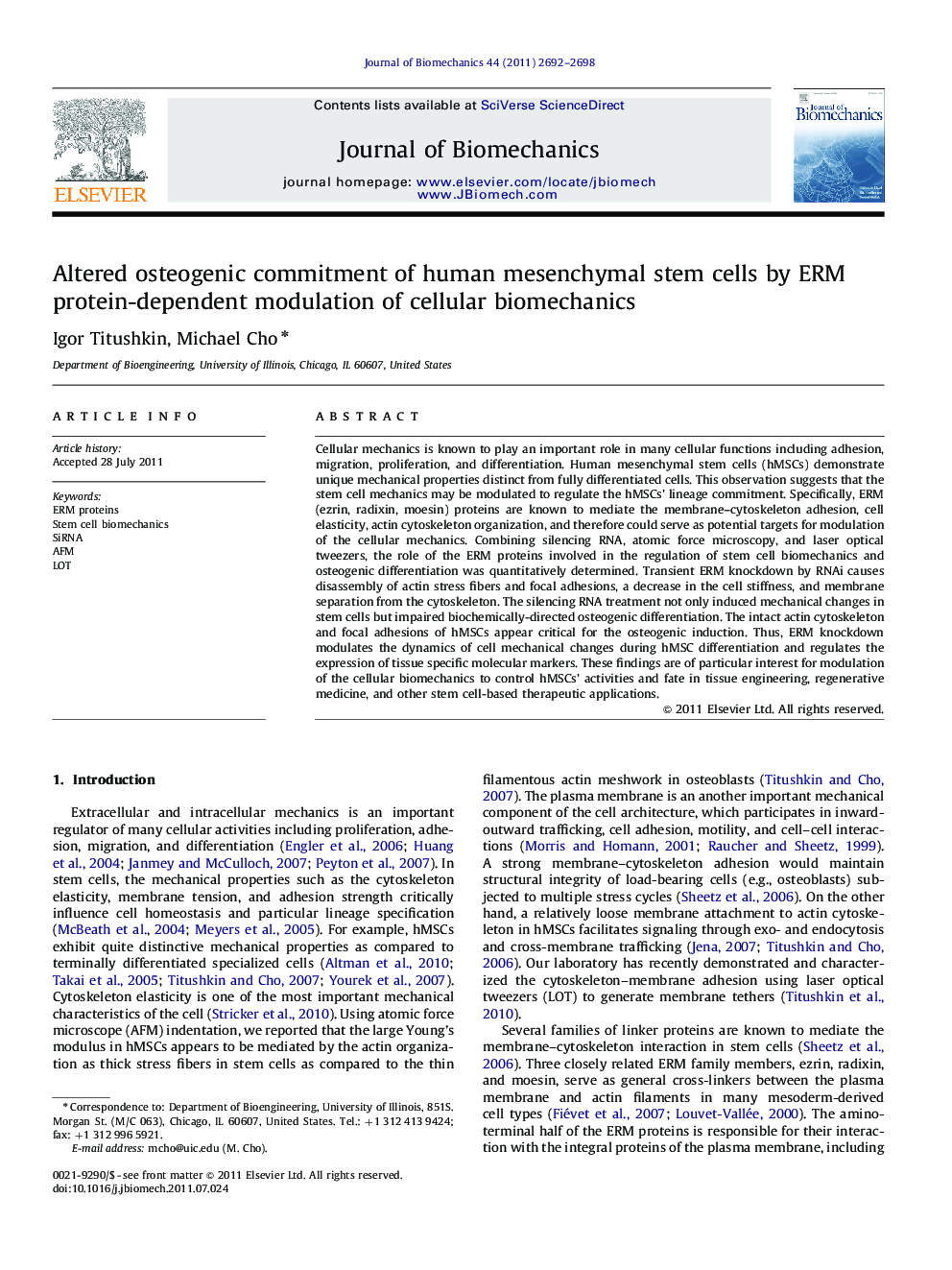| Article ID | Journal | Published Year | Pages | File Type |
|---|---|---|---|---|
| 872502 | Journal of Biomechanics | 2011 | 7 Pages |
Cellular mechanics is known to play an important role in many cellular functions including adhesion, migration, proliferation, and differentiation. Human mesenchymal stem cells (hMSCs) demonstrate unique mechanical properties distinct from fully differentiated cells. This observation suggests that the stem cell mechanics may be modulated to regulate the hMSCs' lineage commitment. Specifically, ERM (ezrin, radixin, moesin) proteins are known to mediate the membrane–cytoskeleton adhesion, cell elasticity, actin cytoskeleton organization, and therefore could serve as potential targets for modulation of the cellular mechanics. Combining silencing RNA, atomic force microscopy, and laser optical tweezers, the role of the ERM proteins involved in the regulation of stem cell biomechanics and osteogenic differentiation was quantitatively determined. Transient ERM knockdown by RNAi causes disassembly of actin stress fibers and focal adhesions, a decrease in the cell stiffness, and membrane separation from the cytoskeleton. The silencing RNA treatment not only induced mechanical changes in stem cells but impaired biochemically-directed osteogenic differentiation. The intact actin cytoskeleton and focal adhesions of hMSCs appear critical for the osteogenic induction. Thus, ERM knockdown modulates the dynamics of cell mechanical changes during hMSC differentiation and regulates the expression of tissue specific molecular markers. These findings are of particular interest for modulation of the cellular biomechanics to control hMSCs' activities and fate in tissue engineering, regenerative medicine, and other stem cell-based therapeutic applications.
